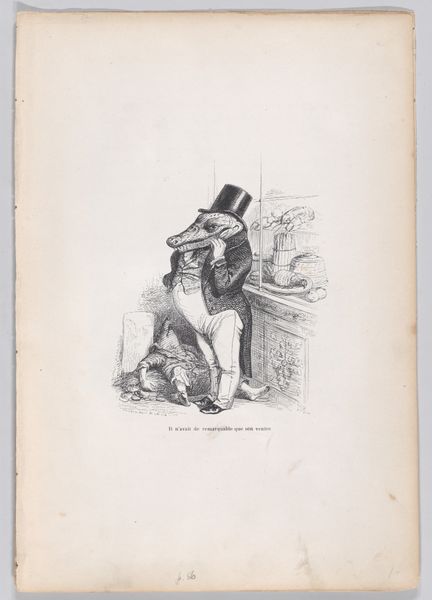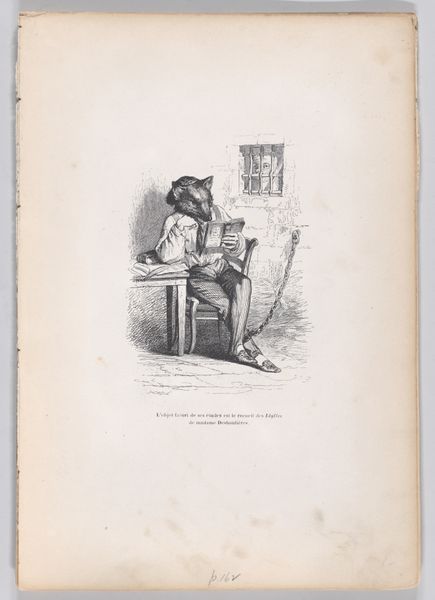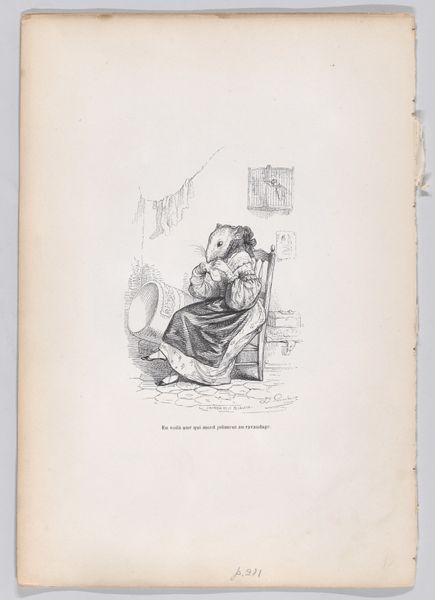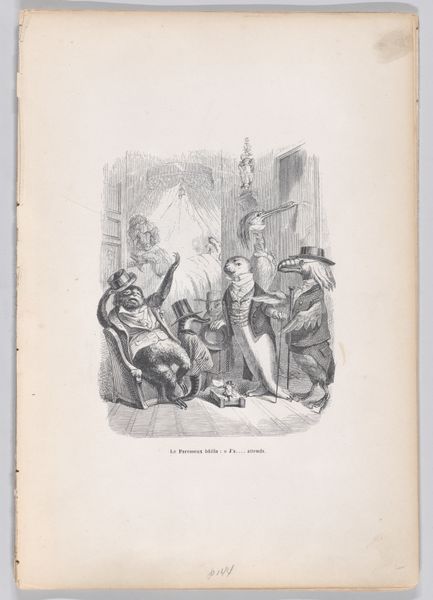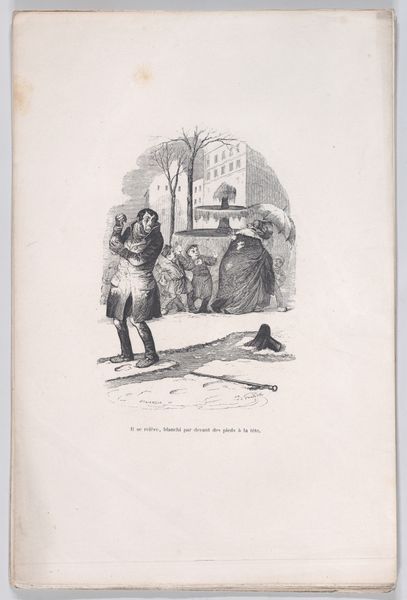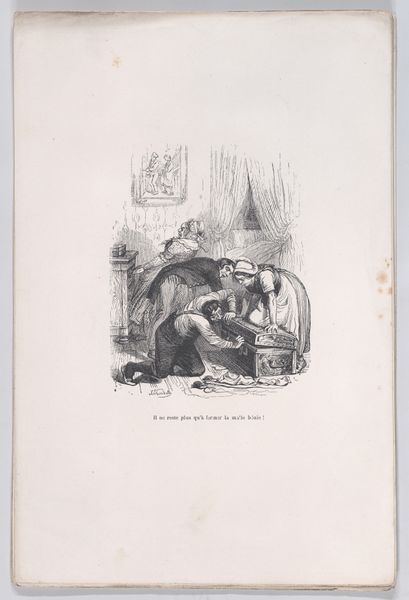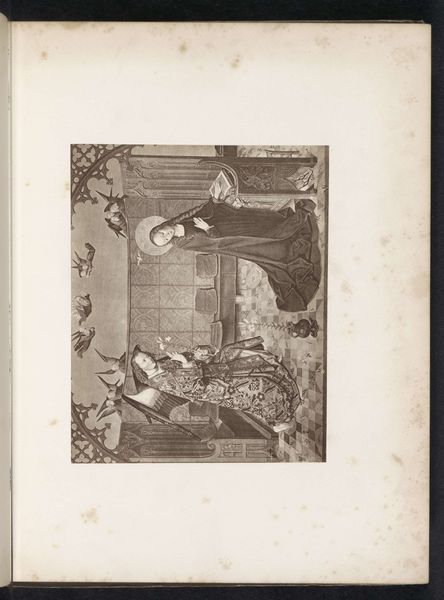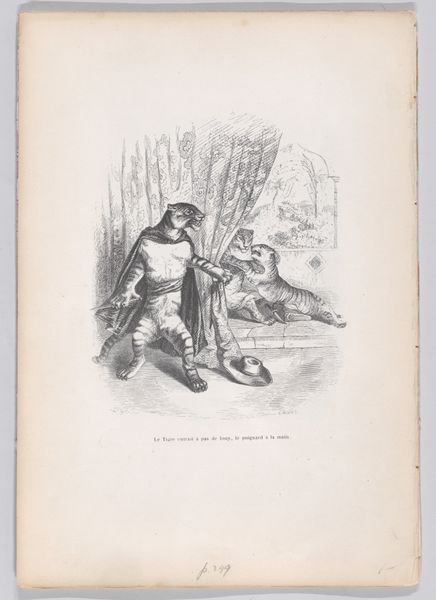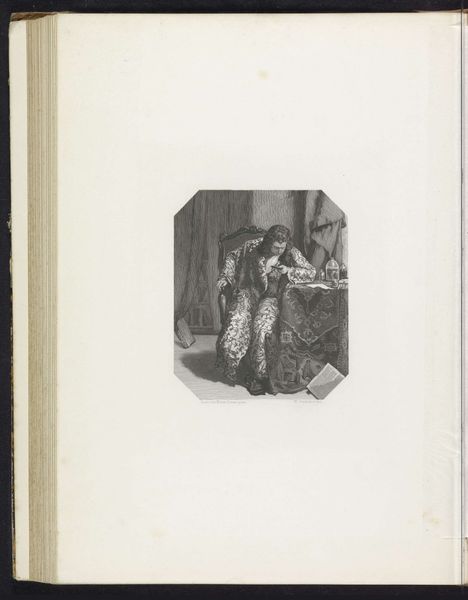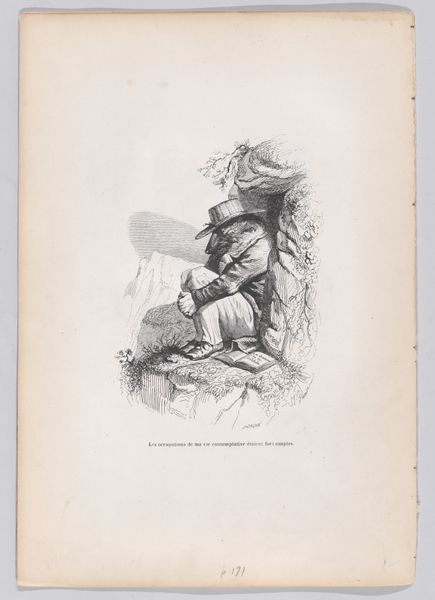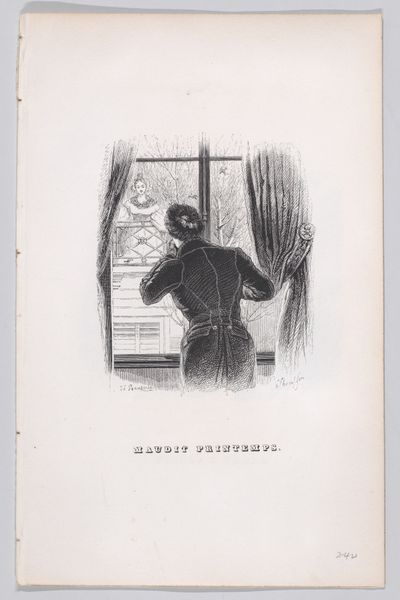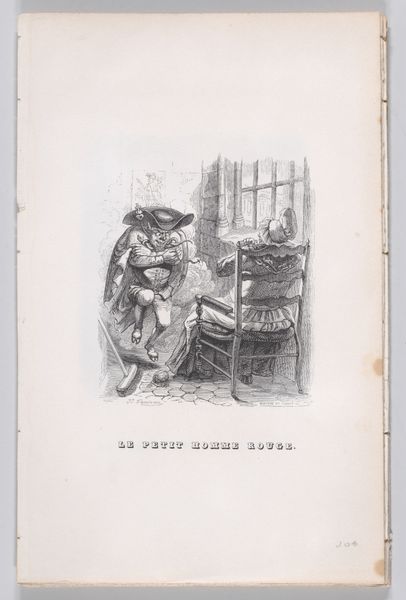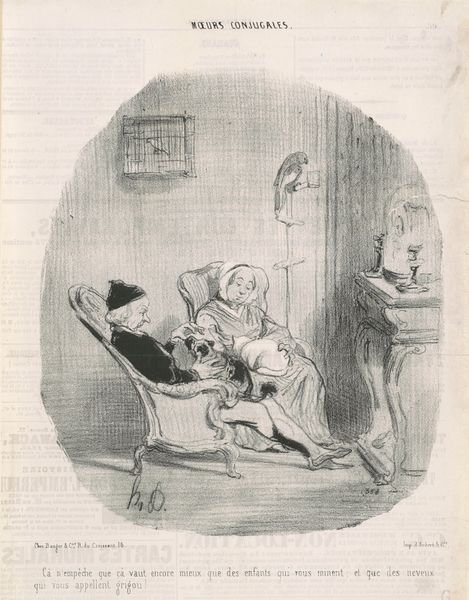
"A very well put insect and beautiful dancer" from Scenes from the Private and Public Life of Animals 1832 - 1852
0:00
0:00
drawing, print
#
drawing
# print
#
caricature
#
romanticism
Dimensions: Sheet: 10 5/16 × 7 3/16 in. (26.2 × 18.2 cm)
Copyright: Public Domain
Editor: So, this lithograph, "A very well put insect and beautiful dancer" by J.J. Grandville, was created sometime between 1832 and 1852. I find the insect-man figure peculiar and kind of unsettling. What strikes you when you look at this print? Curator: Immediately, I’m drawn to the implications of material production. Lithography itself—consider the labor involved in the image's creation. The stone, the ink, the printing press. Are we meant to admire the artist's skill or question the economic systems enabling this print to exist and circulate? Editor: That's a really interesting way to look at it. I hadn't considered the economic aspect. So you’re suggesting the print isn't just about the insect caricature but also the context of its creation? Curator: Precisely! Think about who could afford prints like this during the Romantic era. How does the access to and consumption of this type of image reveal or reinforce class distinctions? It challenges us to examine art not in isolation but within broader social and economic realities. Editor: Wow. That gives me a completely new perspective on Romantic art. It's much more connected to society than I initially thought. I see now that thinking about production and consumption offers new layers to our understanding. Curator: Absolutely. And considering Grandville’s satirical work, might the image critique societal norms surrounding labor or even consumerism of the era, subtly undermining notions of "high art" through the very material of the printed image itself? Editor: This really flips how I’ve approached art before, thanks! I’ll be sure to keep the materials and social context in mind next time. Curator: My pleasure! Always question the conditions and context in which something is created, because ultimately, they inform our understanding of it.
Comments
No comments
Be the first to comment and join the conversation on the ultimate creative platform.
